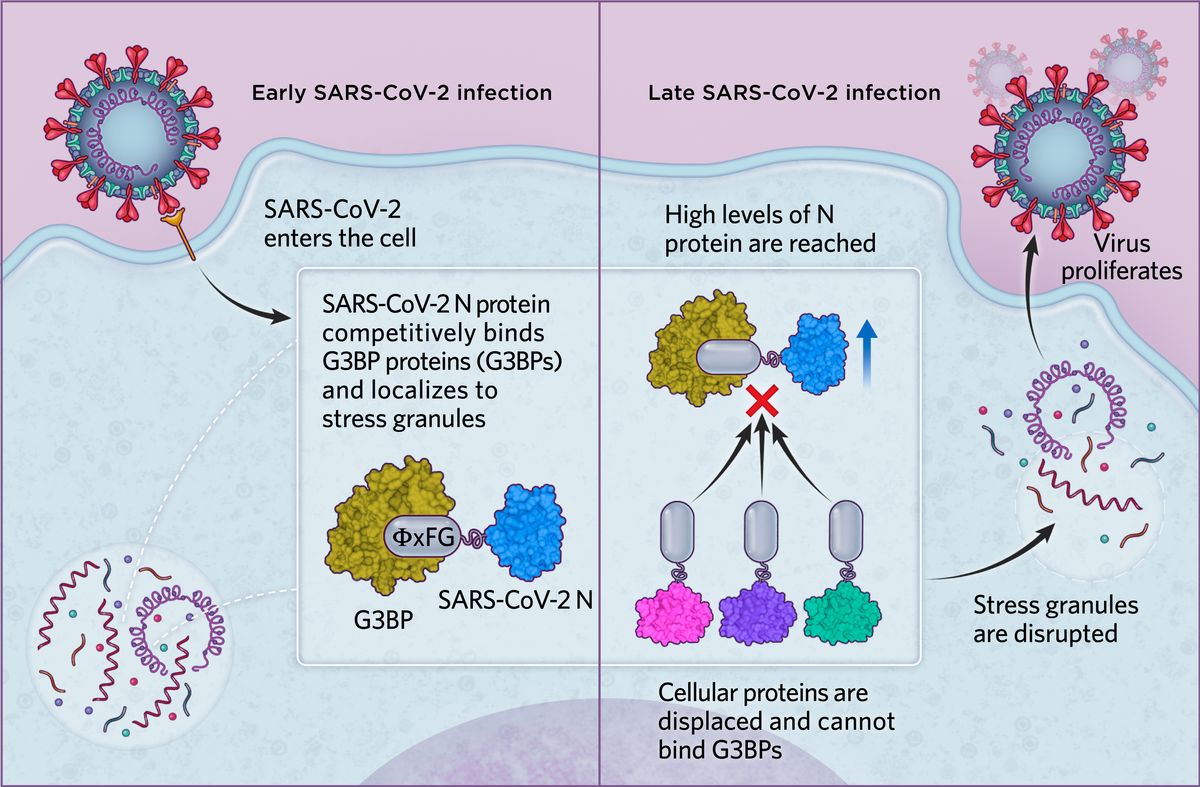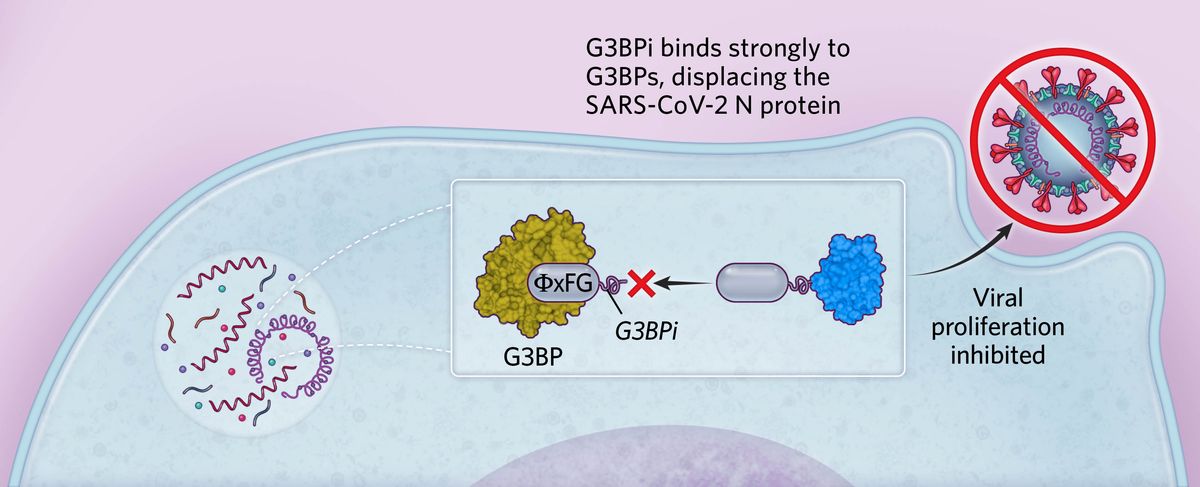ABOVE: © Scott Leighton
In the early days of studying protein behavior, researchers recognized that large, structured protein domains often interacted with each other in a lock-and-key fashion, fitting together almost like puzzle pieces. Toward the end of the 20th century, however, the growing discovery of previously overlooked unstructured regions suggested that there was more to the story. One type of protein interaction mediated by the unstructured proteome involves short linear motifs (SLiMs), abundant stretches of up to 10 amino acids. Their interactions with other proteins are generally transient and weak, but SLiMs are nevertheless significant contributors to protein function and regulatory mechanisms in the cell.
Structured protein domains | SLiMs |
Approximately 50–200 amino acids, with several points of contact | Just ~2–10 amino acids, with only 2–3 that act as core binding determinants |
Distinct three-dimensional structure | Lack a three-dimensional structure |
Strong and often long-lasting interactions, such as in protein complex formation | Weak, transient interactions |
Bind domains of other protein partners, interactions that often resemble a | Typically bind to a conserved pocket on a globular protein domain |
 © Scott Leighton |  © Scott Leighton |
SLiMS IN SARS-COV-2 INFECTION
SARS-CoV-2 appears to take advantage of the host stress granule machinery deployed in response to viral infection to favor its proliferation. Specifically, our work shows that its nucleocapsid (N) protein, responsible for encapsulating viral RNA and coordinating replication and other functions, contains a SLiM that competes with cellular proteins in binding with stress granule–forming proteins, namely G3BP1 and G3BP2 (G3BPs). In doing so, the virus effectively promotes its proliferation while dampening the cell’s antiviral defenses. Targeting these SLiM-mediated protein interactions may one day prove to be a feasible antiviral therapy approach.
Normal stress response
In response to viral infection or other stressors, cells form stress granules, membraneless organelles that contain host mRNA, viral RNA, translation factors, and RNA-binding proteins. These include G3BPs, which bind to other stress granule proteins via an ΦxFG SLiM, where Φ represents a hydrophobic amino acid, x represents any residue, and F and G represent phenylalanine and glycine, respectively. This response causes cells to limit their energy use and restrict protein production. Because viruses need the cellular machinery to produce their viral proteins and proliferate, the stress response can hamper this, with stress granules often associated with an antiviral role.

SARS-CoV-2 infection
In the case of SARS-CoV-2, we found in human cells that the N protein is able to bind G3BP proteins via an ΦxFG SLiM, possibly to localize viral replication to stress granules in early infection. As levels of the SARS-CoV-2 N protein increase in later infection stages, N effectively displaces all cellular proteins from G3BPs and disrupts cytoplasmic stress granules. This ultimately promotes viral proliferation and the dampening of antiviral defense mechanisms.

Targeting stress granule formation
Based on these findings, we designed a peptide inhibitor containing ΦxFG-like SLiMs that bound strongly to G3BPs, preventing the binding of SARS-CoV-2 N protein in human cells. This peptide (G3BPi) inhibited viral proliferation in a monkey cell line commonly used in SARS-CoV-2 studies, though the specific downstream mechanisms remain to be elucidated.

Read the full story.











